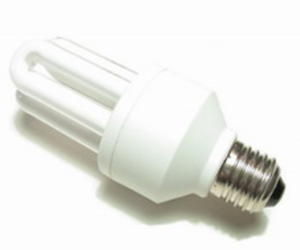In Cuba, murky light thrown by energy-saving bulbs
- Submitted by: lena campos
- Science and Technology
- 10 / 16 / 2013

Cuba's energy revolution is running in the dark, so to speak.
In 2005, the government decided to switch out incandescent bulbs for energy-saving ones. The process really got underway nationwide in 2006 -- officially named "Year of the Energy Revolution in Cuba" -- a title that appeared on the masthead of the Communist Party daily Granma.
People were asked to turn in their regular light bulbs -- only those that were still good, please -- and were given energy-saving bulbs as a replacement with the grass root Committees for the Defense of the Revolution duly noting who turned in how many bulbs.
Jump seven years to today and the issue is finding energy-saving bulbs and at what price.
An article published by Granma earlier this month is headlined "Phantom bulbs," and the author says that an investigative team was sent out in response to a letter to the editor and various phone calls complaining that in Havana there were no bulbs to be found selling in Cuban pesos (CUP) -- the money the vast majority of the islanders are paid in. And in Havana's dual currency Cuban Convertible Peso (CUC) shops, the bulbs, when found, were selling for above 2 CUC or the equivalent of 50 regular Cuban pesos.
For the average Cuban worker, even when available, the cost of these phantom bulbs in Cuban pesos was prohibitively high for what they were getting. Eighteen-watt bulbs went for 50 CUP; 14-watt for 40 CUP.
Don't even dream of a 40 or 60-watt bulb. Saving energy means dim lights.
The author writes that in one shop, the sales clerk told her that since energy-saving bulbs sold out six months ago no new stock has come in.
In the CUC stores 11 and 14-watt bulbs lay tantalizing on the shelf for the price of 2.15 CUC (one CUC is roughly equivalent to one U.S. dollar). But that price rose to 3 CUC a bulb if they were Phillips or Magnum. Three dollars a light bulb is a lot even for families earning average salaries that translate into just over 20 U.S. dollars a month. For low-income families, they are out of reach.
Maria, a university professor, earning 825 CUP monthly and raising a family of five, told CBS that when she goes to the CUC store, she finds 5 to 10-watt bulbs for 2.15 to 2.30 CUC. And with the high ceiling apartments typical of Havana, her children can barely see to do their homework.
The state enterprise that imports the energy-saving bulbs says that on an average 14 and 18-watt bulbs bought on the international market costs the country $1.10 and $1.18 in U.S. dollars respectively. As a result, they had been able to import only 43,061 bulbs of the 112,447 bulbs ordered by the local distributor. But according to the article published 10 days ago, the necessary bulbs were now in the Port of Havana and should soon be on sale in the network of CUP stores.
In a letter to the editor in today's edition of Granma, the writer of the original complaint provides an update on the situation: the price of a 14-watt bulb has been dropped to 15.00 CUP and the sale is limited to five per person so that no one unscrupulous person can buy them all up for resale at a higher price -- a unfortunate practice that has emerged along with a burgeoning private sector. But the kicker is that these bulbs are for 220-voltage installations when 100 percent of Cuban homes run on 110. So as J.C. Adams Olmedo writes, the bulbs don't shed the expected light.
And in the murky light shed, Maria, the university professor living on her state-earned CUP salary, asks who is the buyer sent out of the country that purchased these 220 bulbs? Clearly, she suggests, someone who doesn't use them and who most likely takes advantage of their trip abroad to purchase higher watt bulbs for their own home
Source: CBSNews.com
Comments